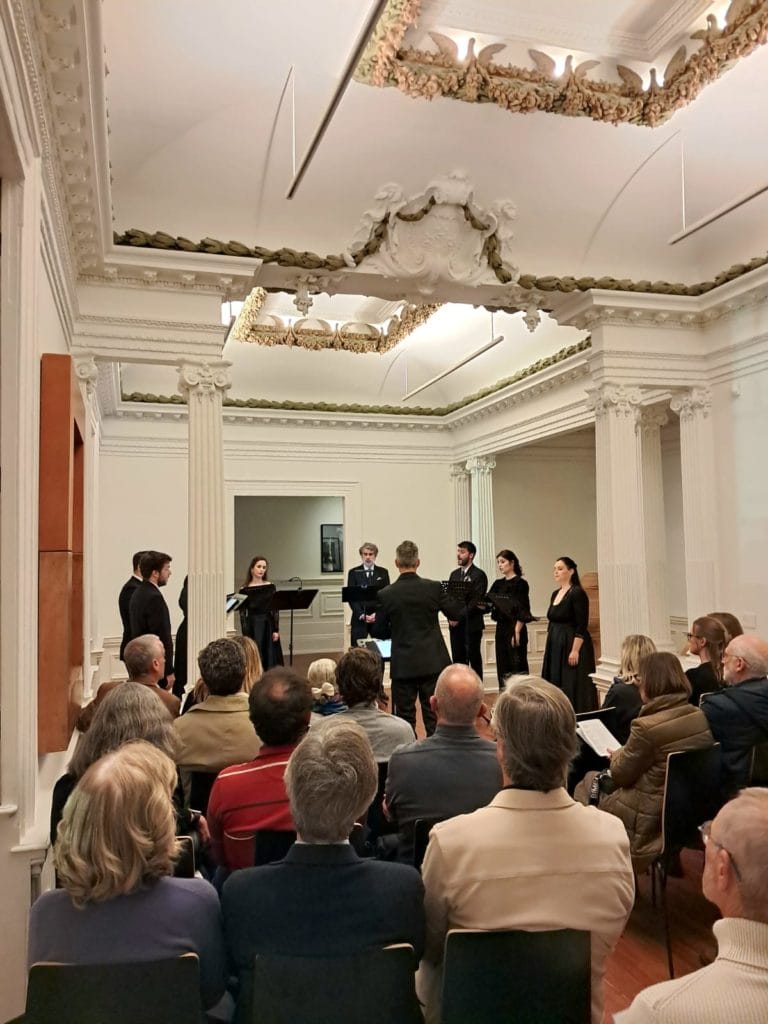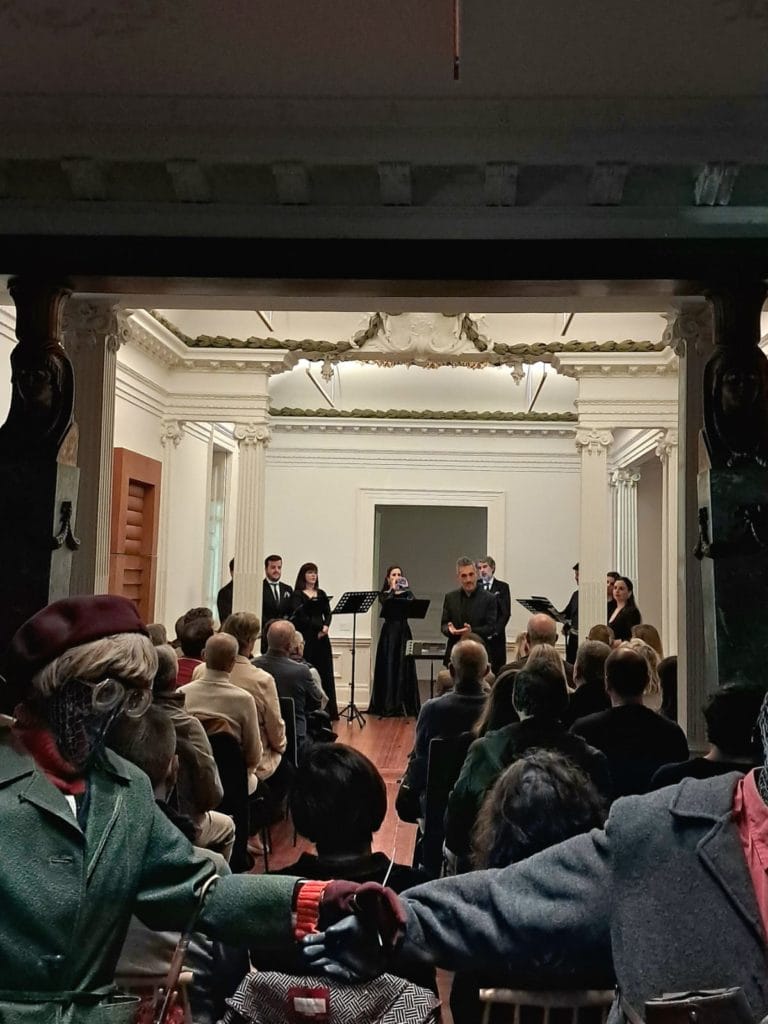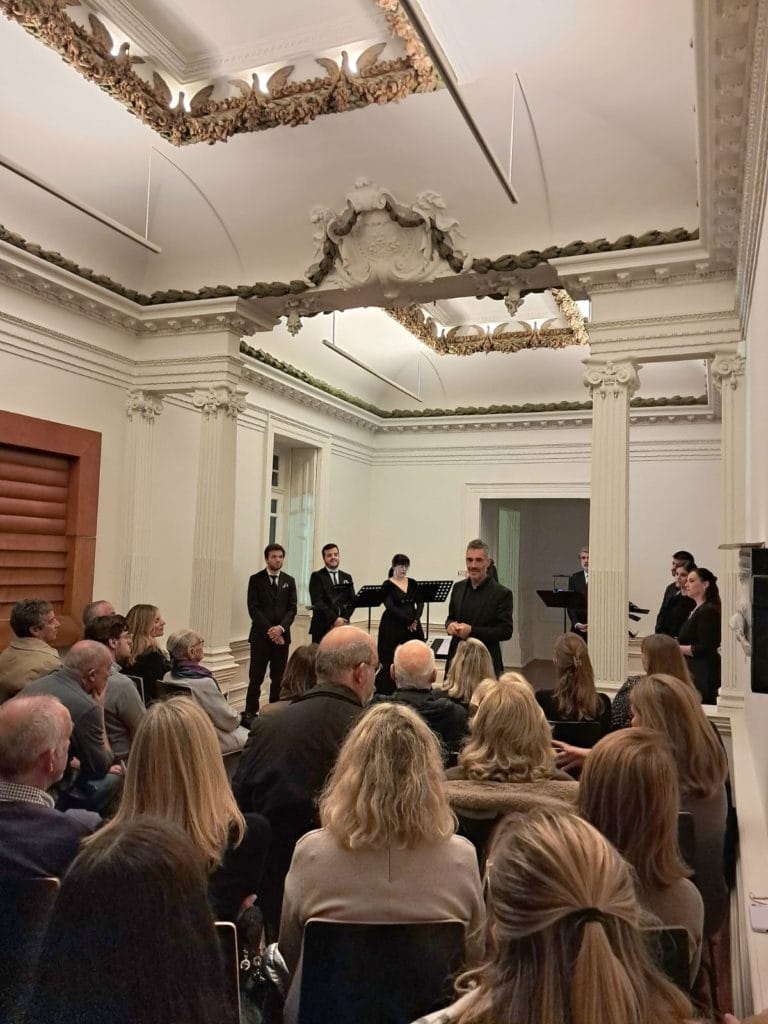The Cathedral of Évora, a central hub for the production of Portuguese sacred music in the Portuguese Renaissance, is the central axis from which most of the composers who make up what is usually known as the golden generation of Portuguese polyphony come: Duarte Lobo, Estêvão de Brito, Estêvão Lopes Morago, Filipe de Magalhães and Manuel Cardoso.
Pedro de Cristo also belongs to this generation, although he came from another center of sacred music teaching and practice at the time: the Monastery of Santa Cruz in Coimbra.
Of all these names, one has been neglected to a certain extent – and surprisingly so – when it comes to interpreting and even researching their music: Estêvão Lopes Morago. Despite this neglect, Morago is considered one of the most talented composers of the golden age of Portuguese Renaissance polyphony. Born in Vallecas (Madrid, Spain) around 1575, Morago was admitted at the age of eight to the Évora Cathedral as a choirboy, and during his time in Évora, Morago was a collegiate member of the choirboys’ college as a pupil of Filipe de Magalhães from 1592 until 1596, the year in which he graduated “Bachelor of Arts”, as Manuel Joaquim tells us in his study and publication of Lopes Morrago’s works (Joaquim, Manuel (1961), Estêvão Lopes Morago – Várias Obras de Música Religiosa “A Cappella”. Lisbon: Portugaliae Musica, Calouste Gulbenkian Foundation).
The same source tells us that on August 15, 1599 “he entered the service of the Cathedral of Viseu, as Master of the Chapel”. It was in this city that he remained until 1628, when he is believed to have died, probably in the Monastery of Orgens, on the outskirts of Viseu.
Only two manuscript codices of Morago have apparently survived to this day. Among the works we know by Lopes Morago is the Missa in Adventu that was part of the Concerto de Reis at Casa São Roque, transcribed into modern notation by José Abreu (University of Coimbra).
Estêvão de Brito is another of the Portuguese Renaissance composers who is less well known to today’s audiences. He was born in Serpa around 1570 and, like Lopes Morago, was also a pupil of Magalhães at the Évora Cathedral – from whom we hear the motet Commissa mea pavesco, for six voices.
Brito’s path was exactly the opposite of Morago’s: although he was Portuguese, it was in Spain that he carried out practically all his work. After studying in Évora, Estêvão de Brito was already chapel master of the Cathedral of Badajoz around 1597, and in 1613 he moved to the cathedral of Málaga, performing the same duties that, curiously, had been carried out 50 years earlier by Cristóbal de Morales. He died in Malaga in 1641, leaving behind what is believed to be a considerable body of work. A substantial part of it disappeared in the Lisbon earthquake of 1755, as it was part of King John IV’s vast library. The surviving catalog edited by Pedro Craesbeeck (“Primeira parte do index da livraria de música do muyto alto, e poderoso Rey Dom João o IV”, 1649) lists Christmas vilancicos, a treatise on music and various motets for 4, 5 and 6 voices. In both Malaga and Badajoz, there are records of Brito being given free time to compose vilancicos for the Christmas and Corpus Christi celebrations, which suggests a large collection of compositions of this type, unfortunately lost.
Vidi Dominum for 8 voices, Brito’s work for two choirs that was heard at the end of the concert (and which has not yet been recorded) demonstrates his own style, which uses various compositional techniques, such as the multiplicity of textures through the use of the two choirs, the use of syncopated values as a way of highlighting certain passages of the Latin text and an exuberant aesthetic that sets him apart from composers such as Manuel Cardoso or Filipe de Magalhães.
(text: Pedro Teixeira)
On January 5, 2025, the Cupertinos – winners of the Gramophone Classical Music Awards 2019, Distinguished with PREIS DER DEUTSCHEN SCHALLPLATTEN KRITIK BESTENLISTE and Awarded Best Album Classical/Erudite Music 2021 PLAY Portuguese Music Awards – performed at Casa São Roque, with a unique Concerto de Reis. See how it went:



